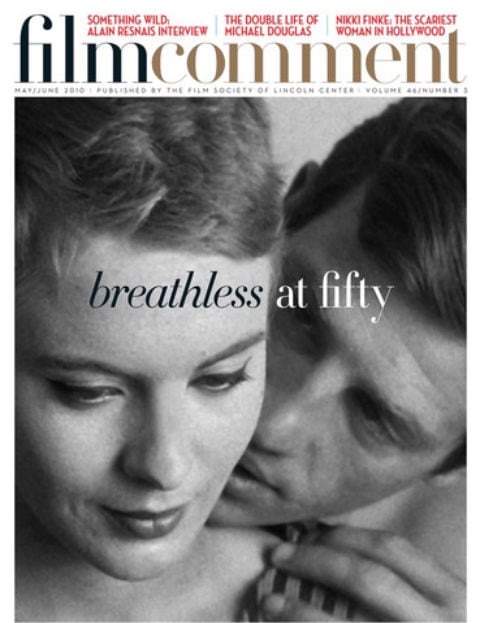These days Scandinavia is largely associated in the American mindset with such Socialistic horrors as high happiness indexes, economic equity and being taken well care of by one’s government. In the Sixties and Seventies, however, at least parts of the region were considered anarchistic hotspots of the Sexual Revolution. This was largely due to the export of cinema that offered by turns earnest promotion and cynical exploitation of this “free love” frontier, in the process toppling censorship taboos long before Deep Throat met either grind house or White House.
A U.S. expat film scholar, curator, and lecturer who’s lived in Denmark since 1993, Jack Stevenson provides a definitive chronicle of that influential era in Scandinavian Blue. Thoroughly researched without being drily academic, and opinionatedly fun sans fanboy snark, this study of a brief, blonde moment in erotic cinema history doubles as Rorschach of two nations’ sexual (and censorious) morality.
In which latter departments Sweden and Denmark were, despite minor differences, alike in being unencumbered by prudish attitudes toward the human body. Most citizens and even lawmakers bridled more easily at threatened restrictions than at publicly disseminated “bad taste.” After all, the inane and sleazy could simply be laughed off—a reaction truly foreign, then and now, for social conservatives in other nations who’d prefer to yell “Fire!” in the emptiest theaters.
As early as 1951, Swedes were stirring controversy and loins with the natural, naturist idylls in Arne Mattsson’s One Summer of Happiness and Ingmar Bergman’s Summer with Monika two years later. Their young protagonists cohabited and skinny-dipped without shame. Setting a long-term pattern, these serious dramas were exported to great success—albeit heavily cut and luridly advertised as end-all shockers to “the kind of men who wear raincoats when it’s not raining.”
But it wasn’t until the mid-Sixties that several taboo-shattering features arrived to provoke key court cases in the U.S. and elsewhere. The sexually liberated heroine of Mac Ahlberg’s Danish I, a Woman (65) cleared a path for Vilgot Sjöman’s I Am Curious (Yellow) (67). Its relatively graphic if simulated sex scenes stirred the first “porn chic” stampede—though many curiosity-seekers complained that this experimental “kaleidoscope” of radical sociopolitics wasn’t dirty enough.
That potato stayed hot so long it didn’t reach the U.S. Supreme Court until 1971. (They deadlocked over its alleged obscenity.) Meanwhile, less-remembered films had pushed the envelope even further. One among many “advocacy” quasi-documentaries trumpeting the new freedoms with variable authenticity, respected Swedish industry veteran Torgny Wickman’s 1969 Language of Love (the porno Robert De Niro takes Cybill Shepherd to see in Taxi Driver) had already shown actual intercourse. At home, it was passed uncut for viewers 15 and up; in Denmark, a teacher took her sixth-grade class, which pronounced it refreshingly educational.
By then the floodgates had opened. As local audiences and tastemakers grew bored with the whole phenomenon, producers made crassly exploitative features exclusively for foreign markets. (Western filmmakers also cashed in on “Scandinavian sin” by slapping words like “Swedish” or “Copenhagen” onto otherwise all-American sexploitaters.) These films were far less interested in spreading frigjorthed—total emancipation from bourgeois morality—than turning a fast buck. Even that gold rush petered out before Deep Throat turned American hardcore into an industry in 1972.
Some Scandi talents chose to go with the Me Decade’s XXX flow, but most who’d been motivated by idealism decided the party was well over. As Stevenson notes, the region today sees conservative trends both generated by and in reaction to such odd bedfellows as Muslim immigrants, feminists, and Christian leaders—even as right-wing U.S. pundits scare their flocks with visions of “super-Socialist Sweden” and “profane” Denmark. What jaded Copenhagen or Stockholm resident circa 1970 could imagine that the films they were yawning at then (say, The Lustful Vicar) would be more likely to rattle “community standards” four decades later?








